A Romantic Hypothesis 2024
Over time, the practice of patterning evolved to encompass a hierarchical approach, serving as a fundamental template for the creation of garments. Initially, patterning was primarily geared towards the production of utilitarian attire for ordinary households, while those with considerable means leveraged it to imbue their personal style with opulence. With the continuous advancements in technology and the availability of resources, the commercial aspects of patterning have substantially streamlined, relegating its artisanal aspects to relative obscurity. In this transformation, the discerning eye of fashion consumers shifted away from appreciating craftsmanship, gravitating more towards the innovative and artistic direction set by brands. Patterns serve as crucial visual representations, illustrating the precise construction methods for various items. The responsibility of the pattern drafter lies in ensuring that these drawings are not only comprehensible but also faithfully represent the pertinent information, a task demanding a combination of technical expertise and creative acumen.
Patterning is a complex process that unfolds on a two-dimensional canvas, comprising a network of lines and curves, meticulously guiding the transformation of these flat templates into intricate three-dimensional garments. This architectural approach to fashion design is pivotal in ensuring that garments conform seamlessly to the wearer’s physique. Patterning, in itself, is a highly skilled art, demanding a mastery of technical expertise.The journey from a rudimentary sketch to the final realization of a garment follows a well-defined pipeline. The initial concept takes shape through a preliminary sketch, eventually evolving into a meticulously drafted pattern. Throughout this intricate journey, there exists a captivating interplay of abstraction. While one can envision the design taking form, the garment remains, as yet, an unrealized vision. The transition from conceptual design to the drafting phase significantly influences how the final garment will manifest. Creative patterning is the position that allows a design to achieve its highest potential. It deftly weaves together the realms of abstraction and tangible design, navigating the fine line between what appears to be present and what is yet to be materialized. In this process, the alphanumeric pattern paper serves as both a void and a blueprint—a blank canvas awaiting the design’s manifestation. Detaching a vital element of a garment and leaving it bare. The garments emerge from this abstract void, seamlessly adorning the body. This progression encapsulates the stages a design undergoes, bypassing the final product stage. It underscores the absence of incompleteness in the initial collection, underscoring the indispensable and symbiotic relationship between the designer and the pattern maker.
Romanticizing with the concept of abstraction and what is tangible by hypothesizing, until it is bestowed upon us.
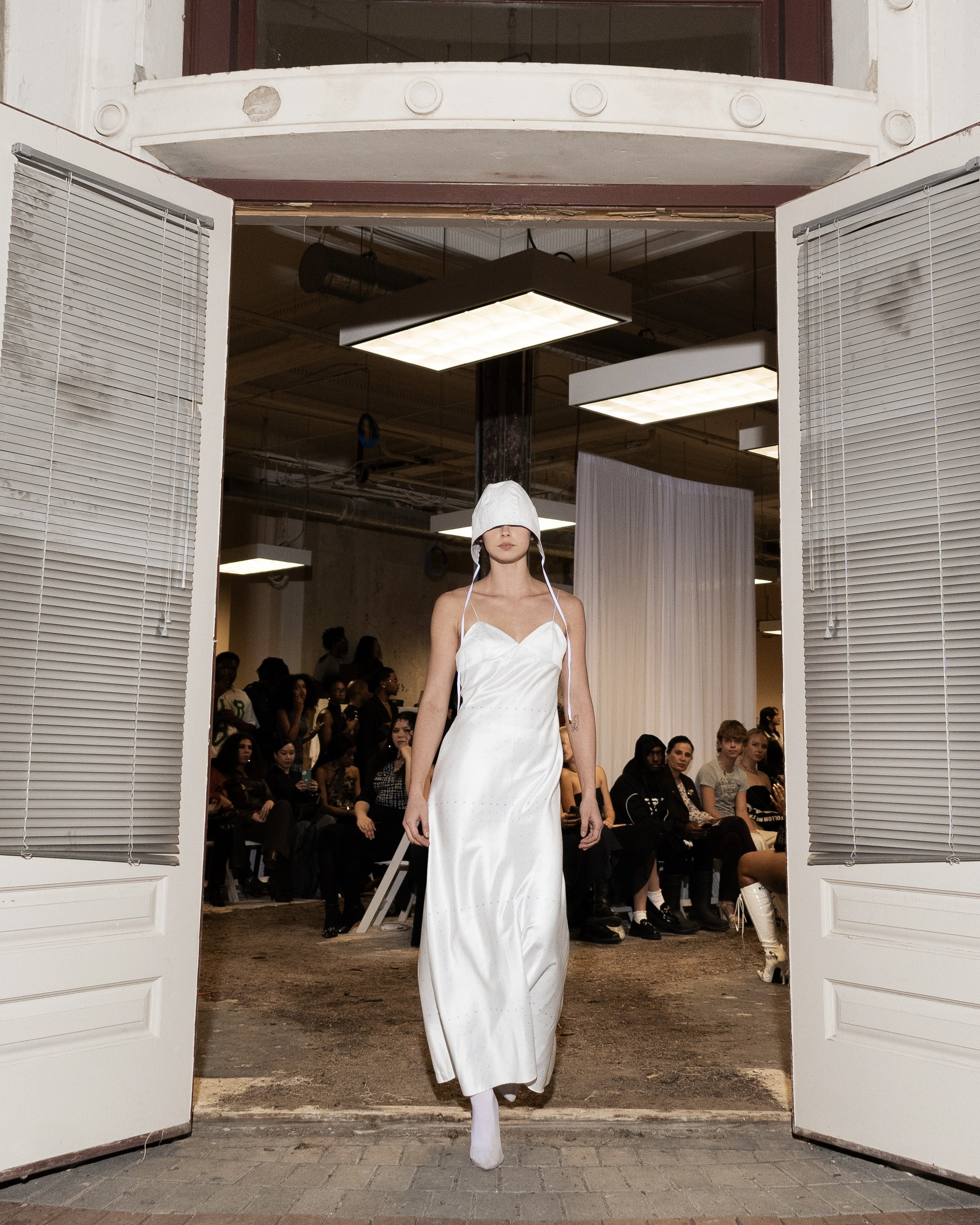
Look 1
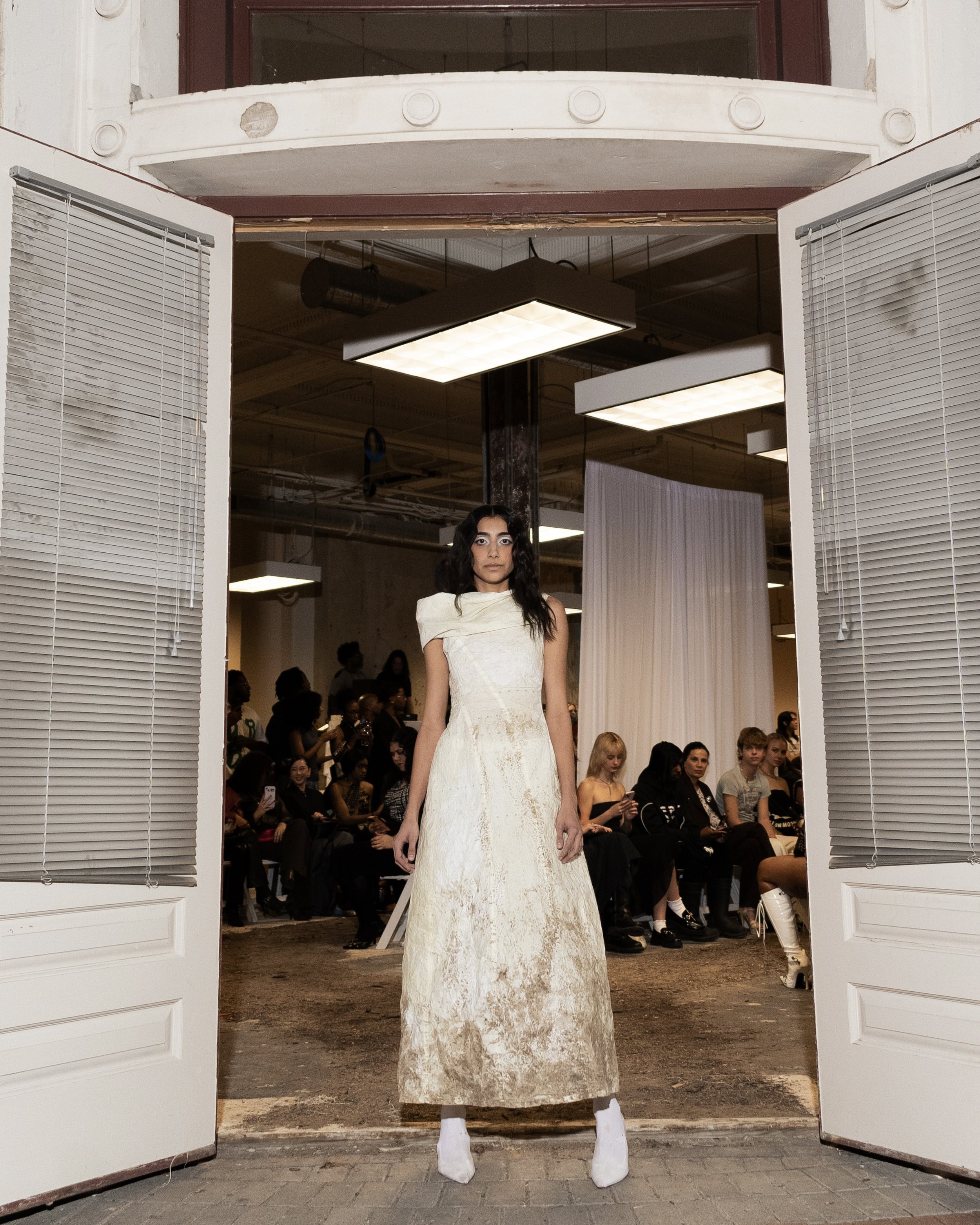
Look 2
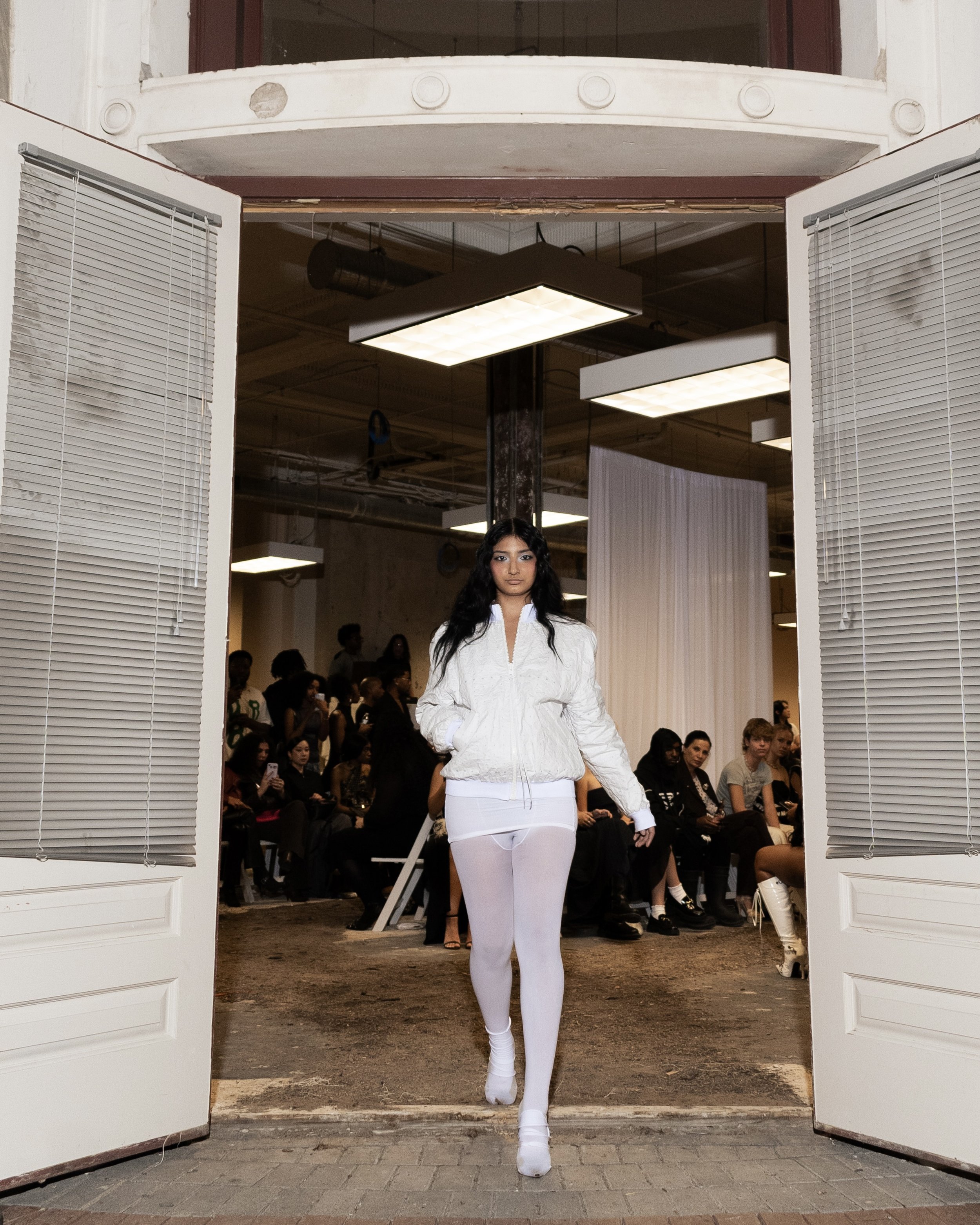
Look 3
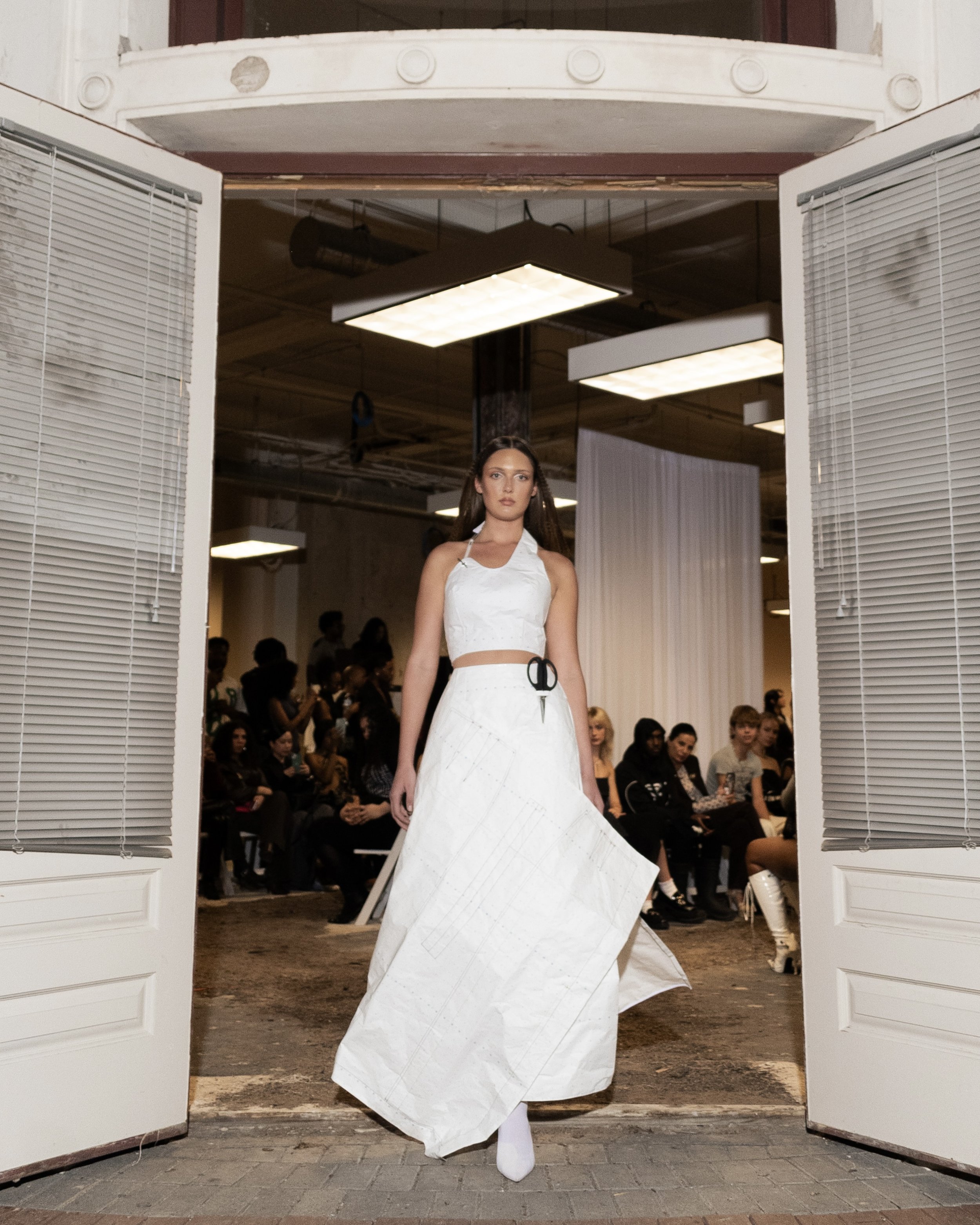
Look 4
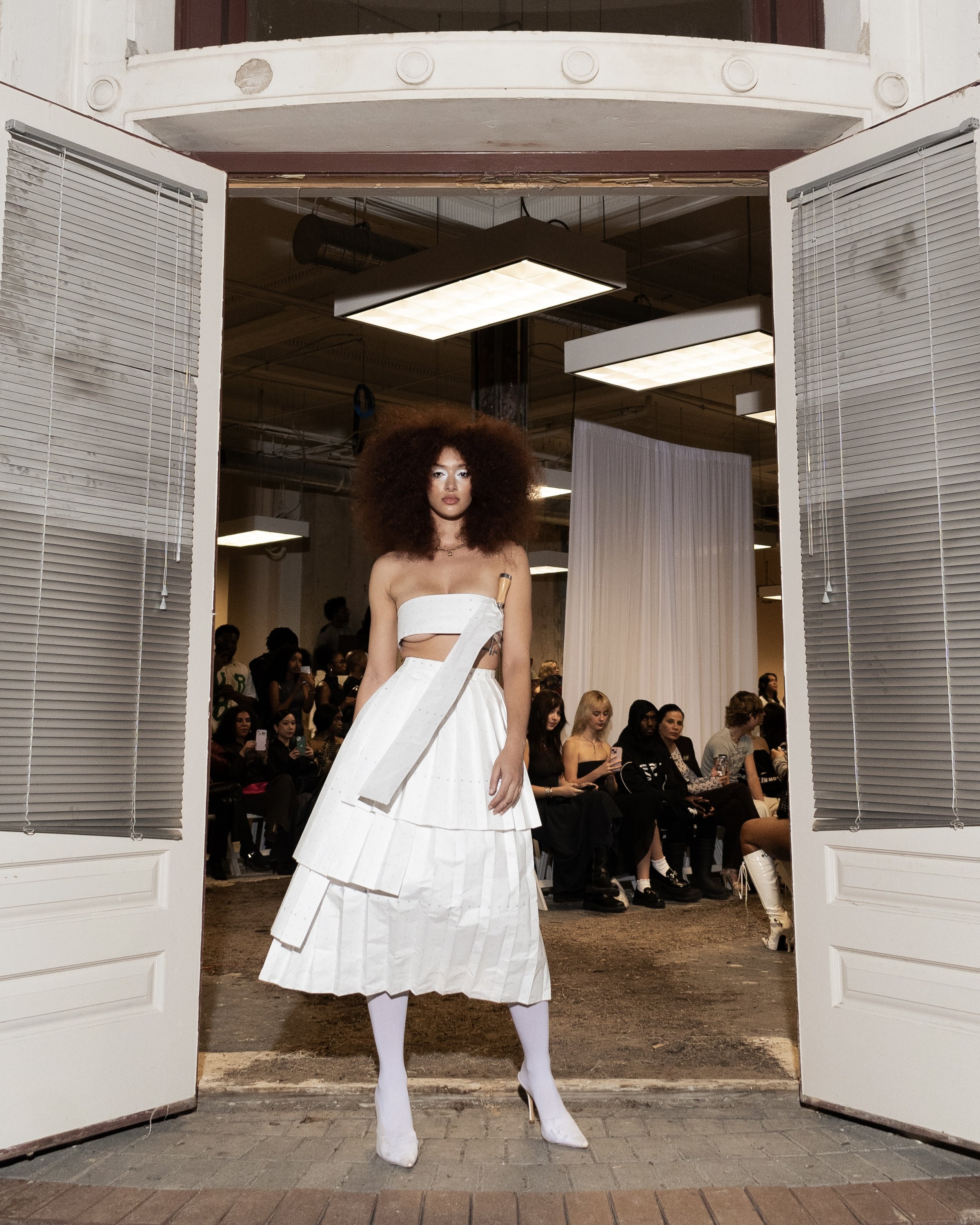
Look 5
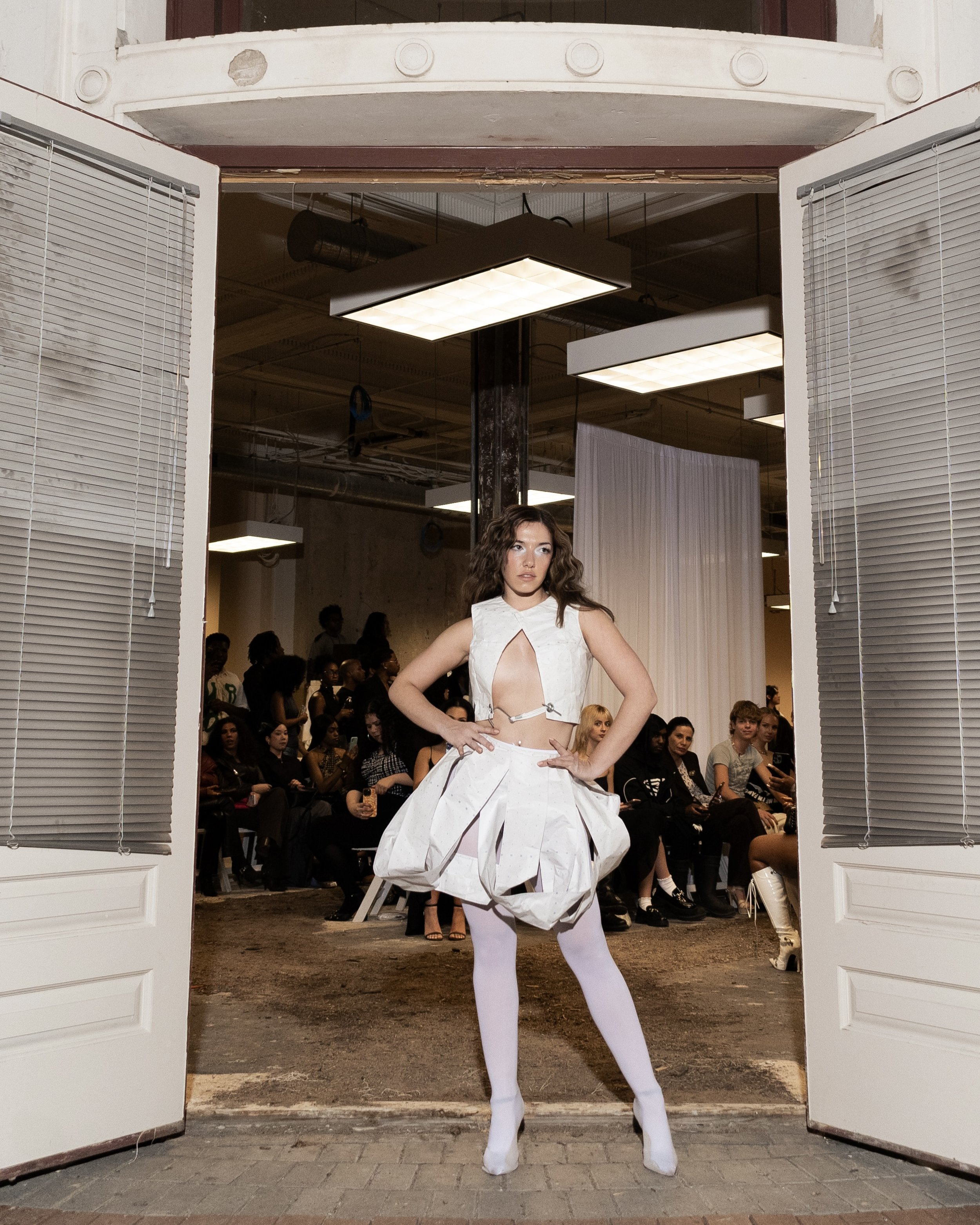
Look 6

Look 7
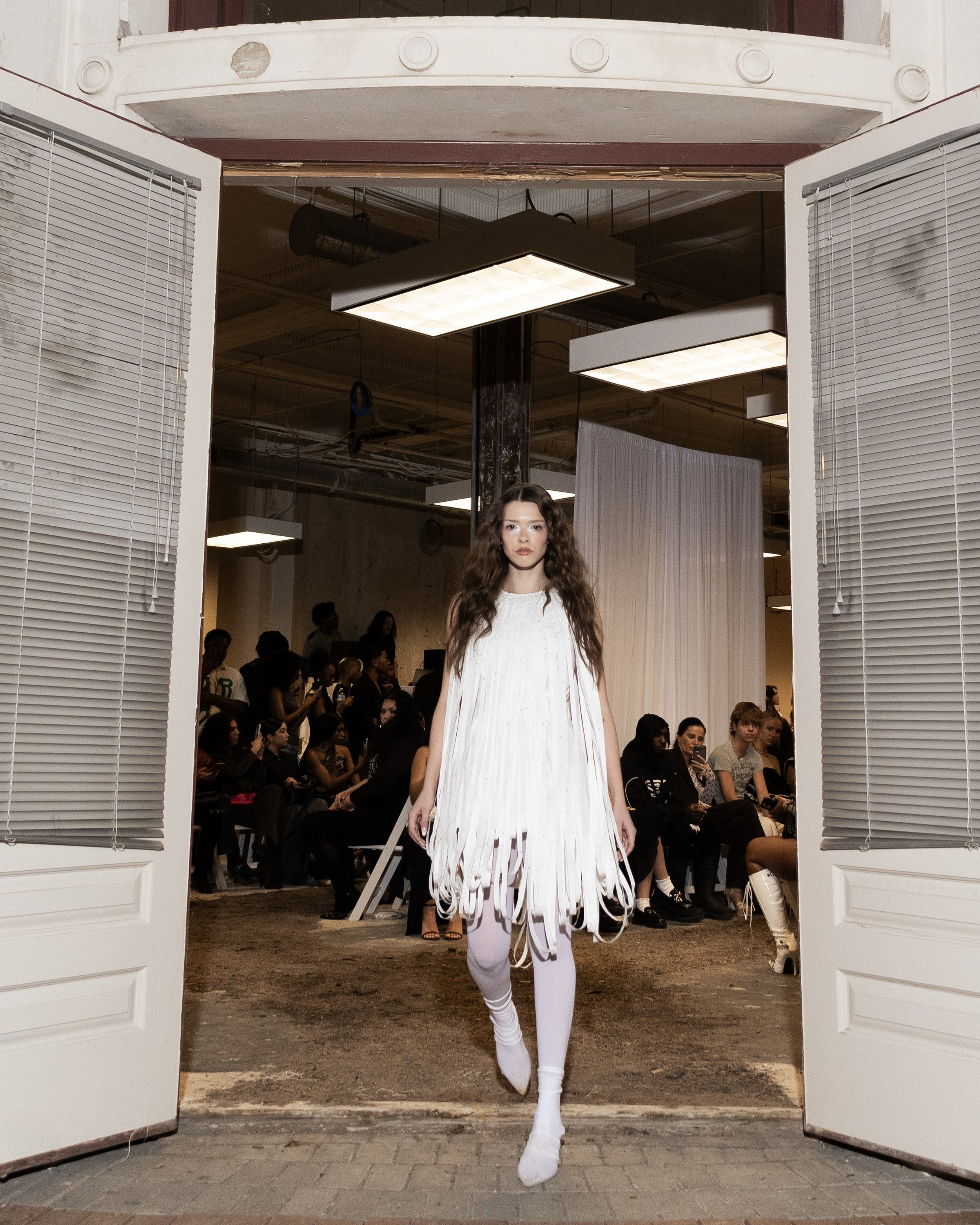
Look 8

Look 9

Look 10

Look 11
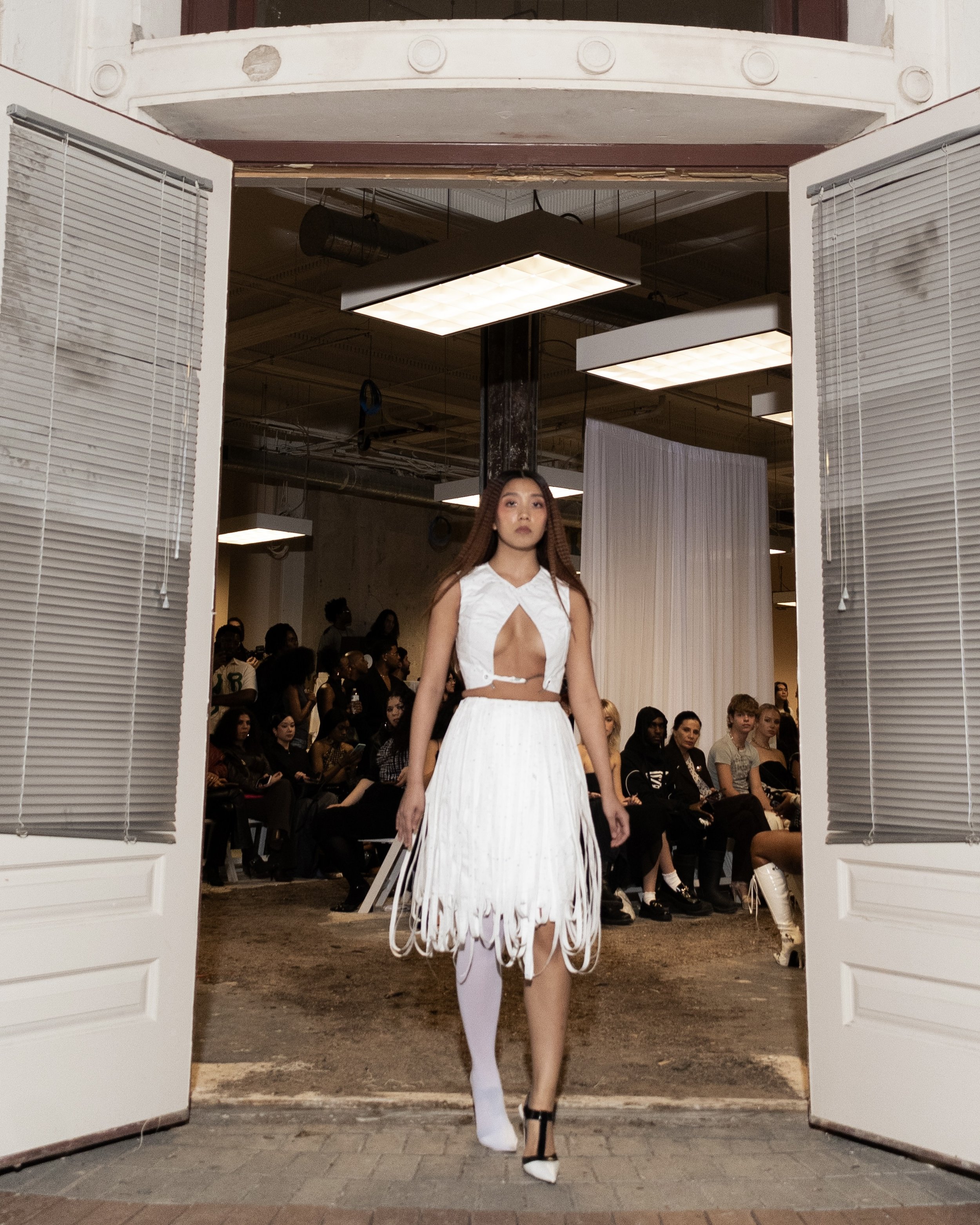
Look 12
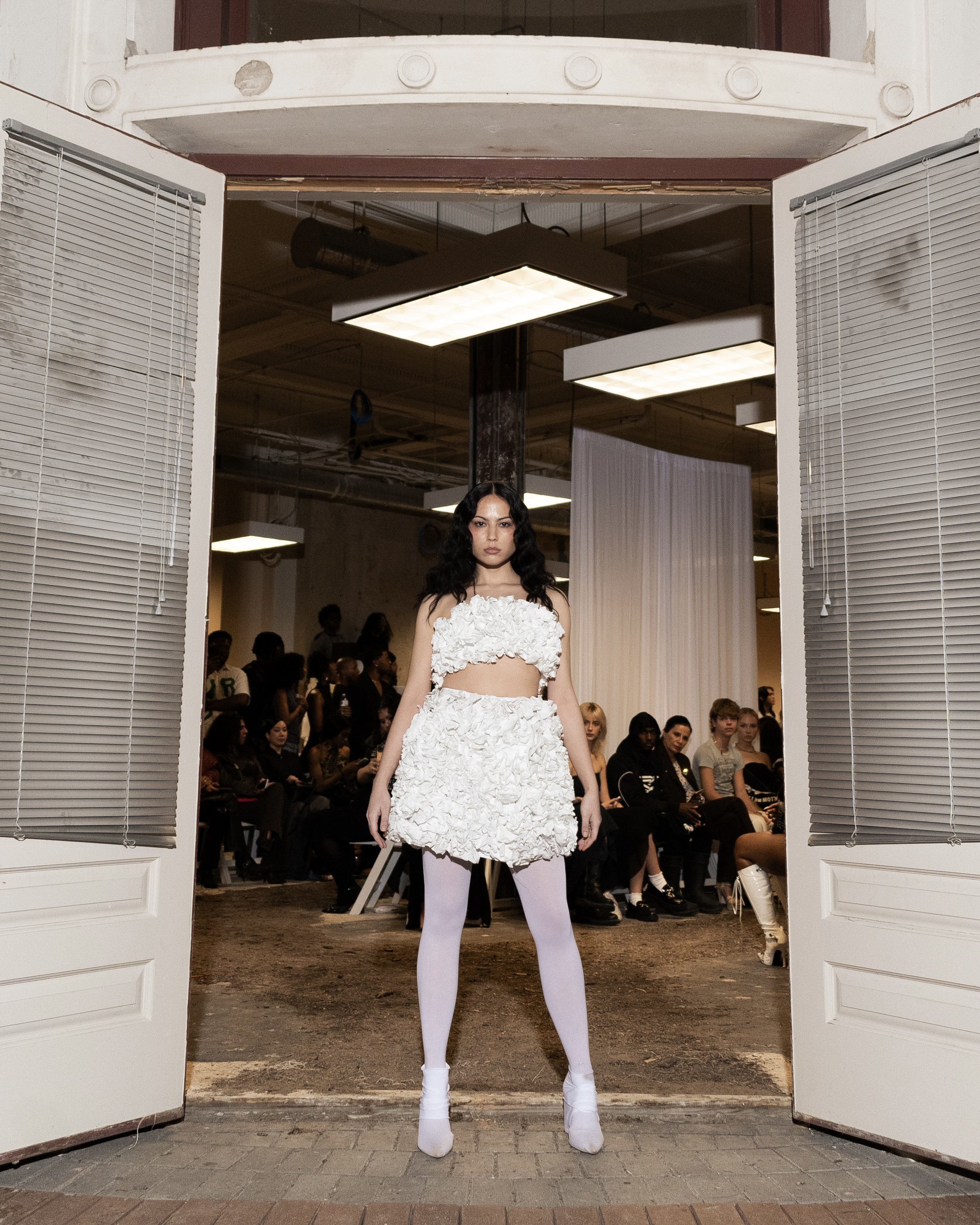
Look 13
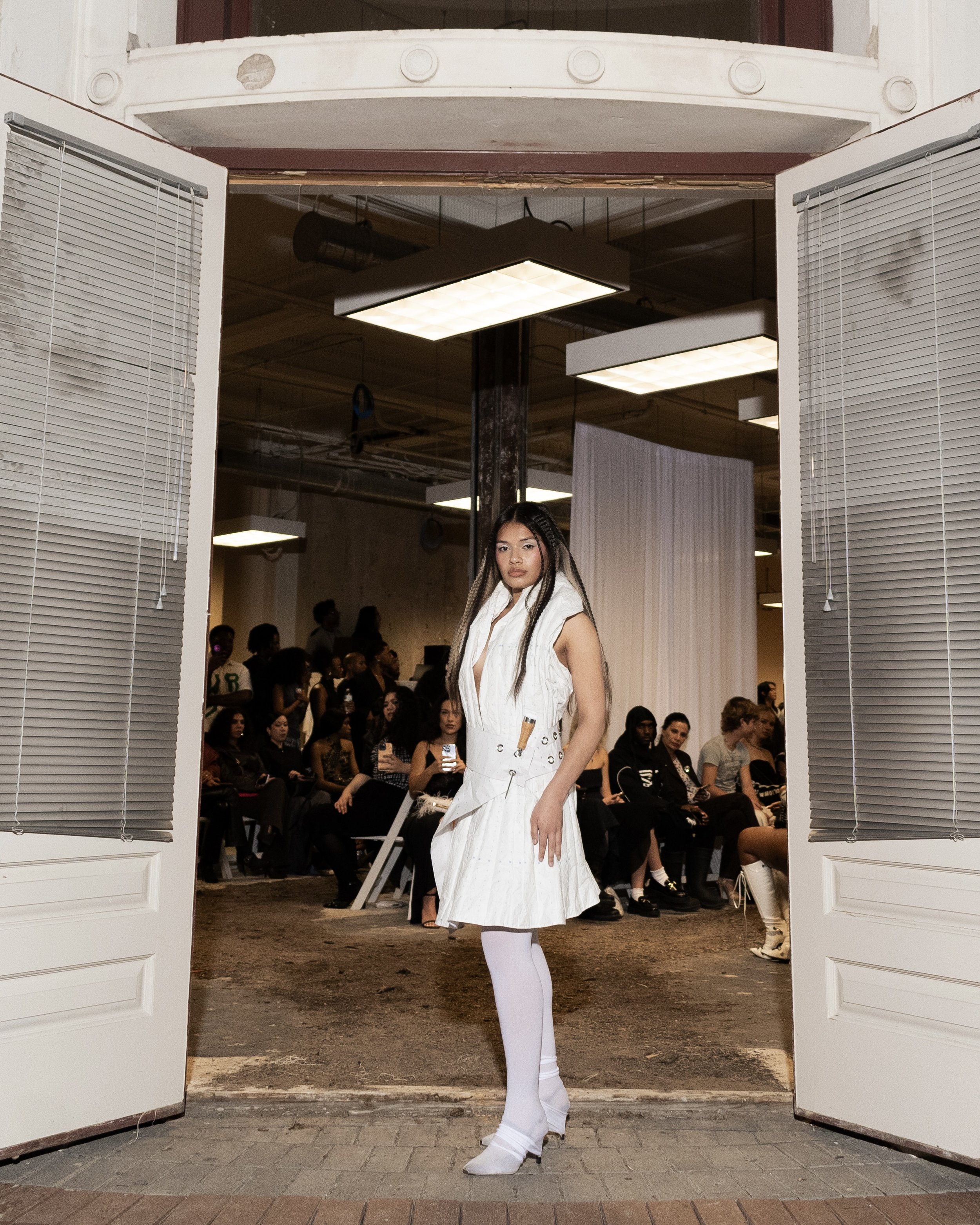
Look 14
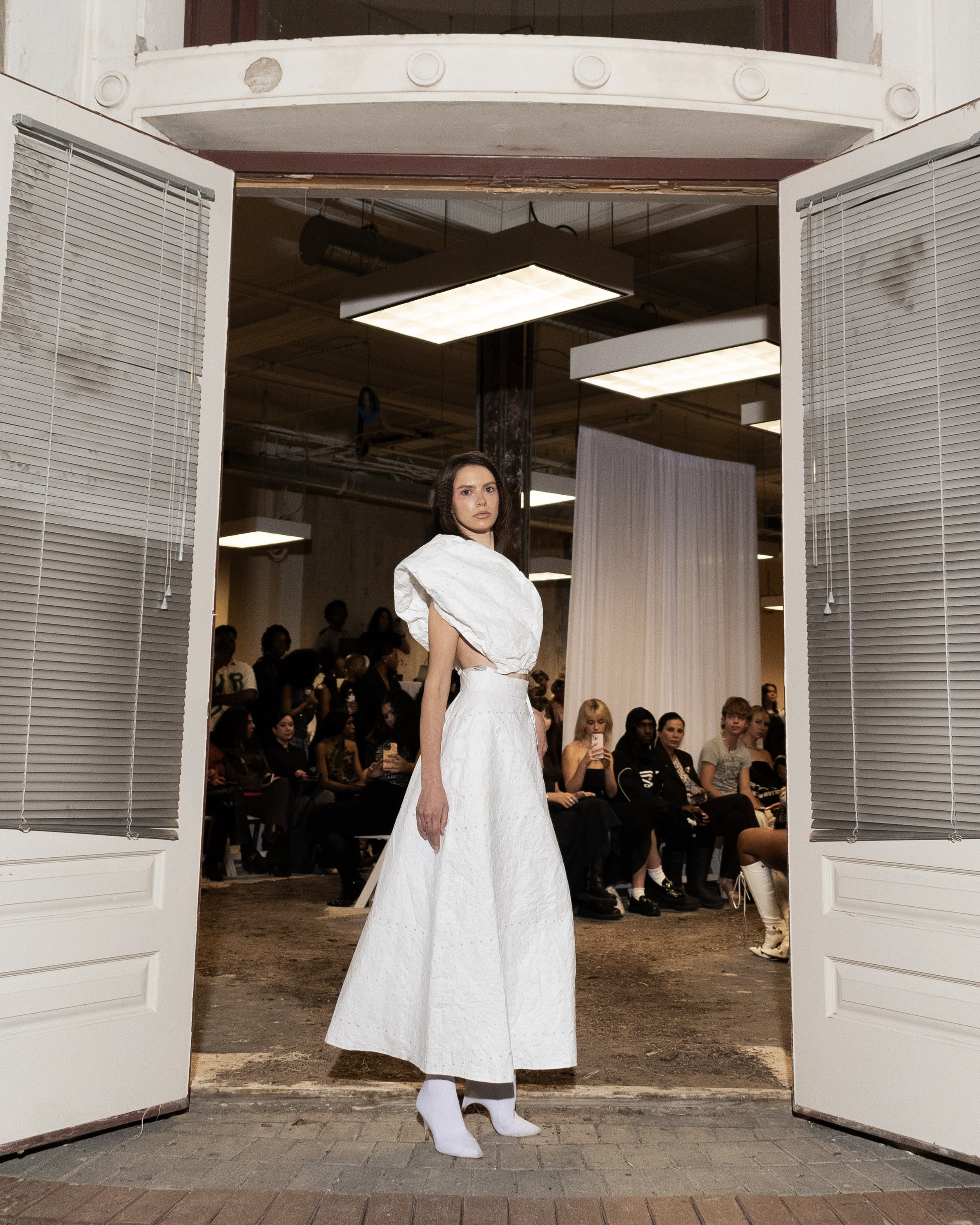
Look 15
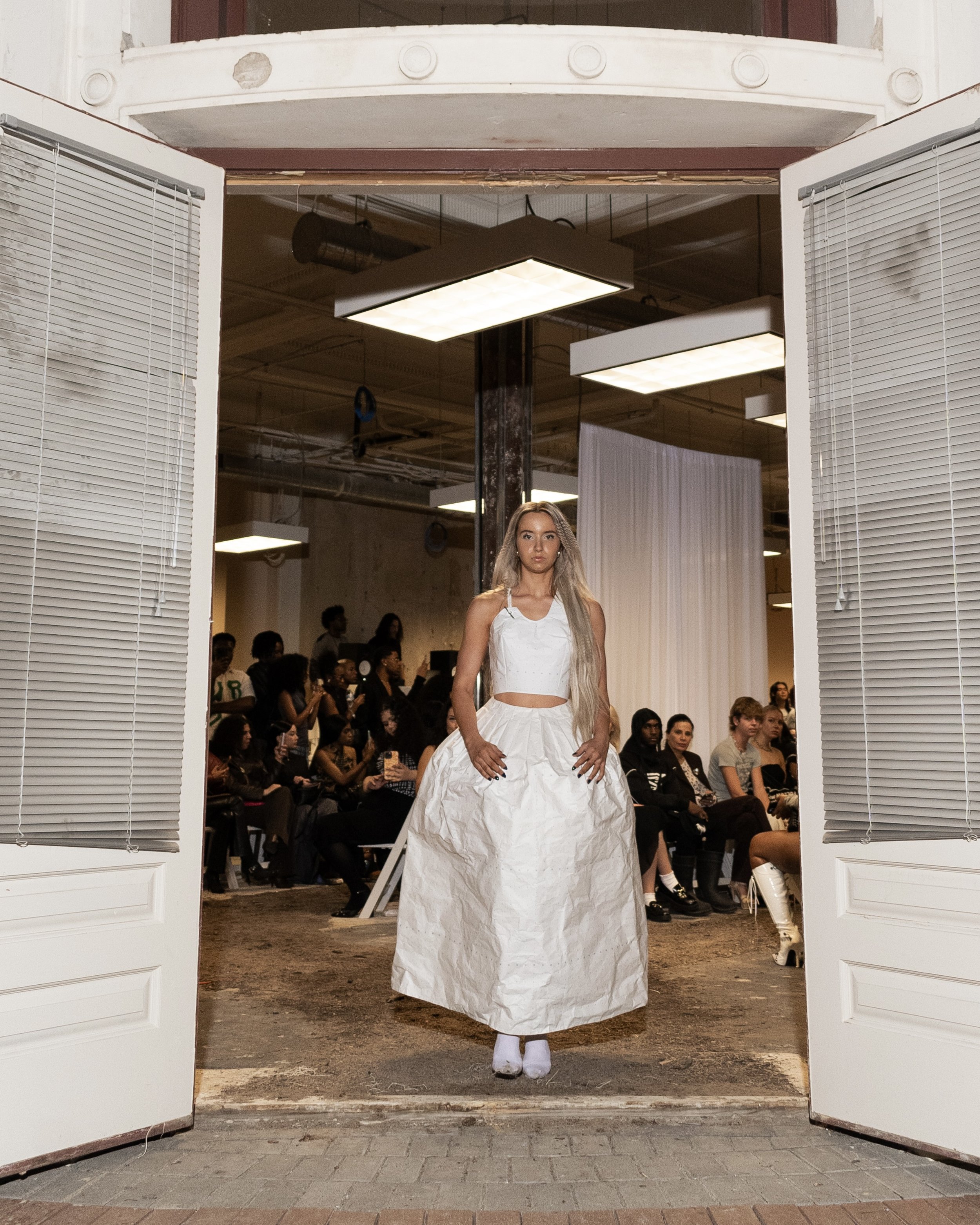
Look 16

Look 17
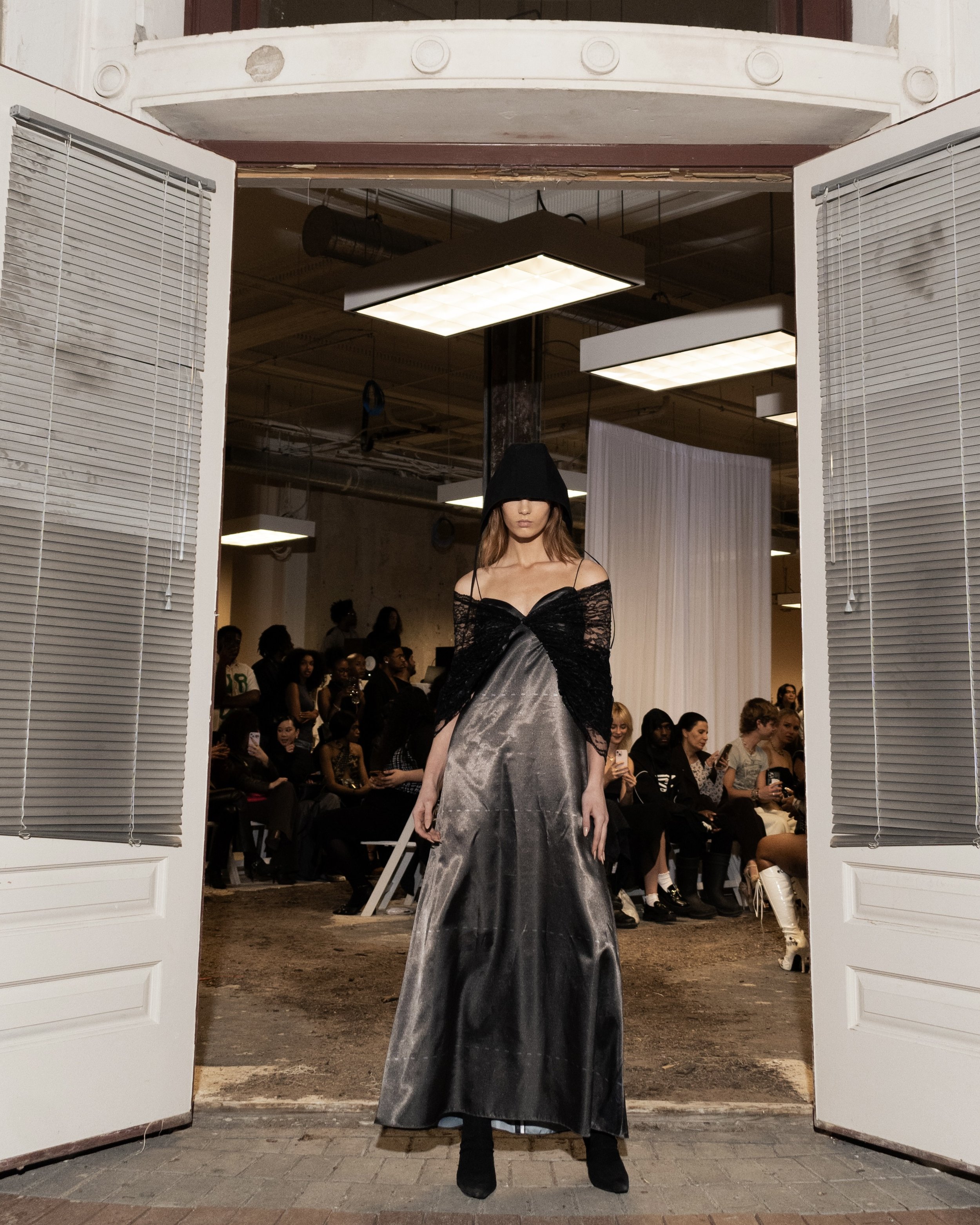
Look 18
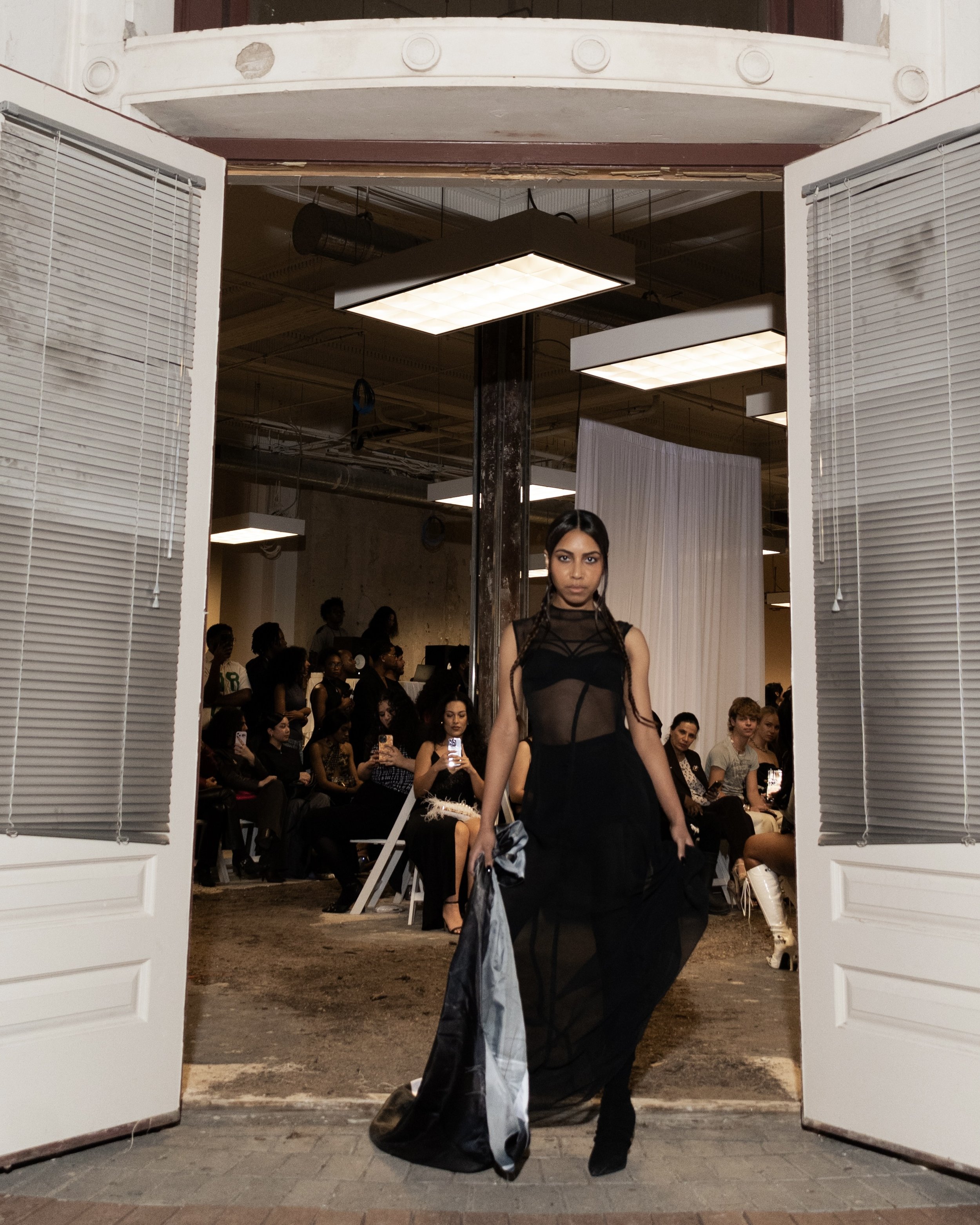
Look 19
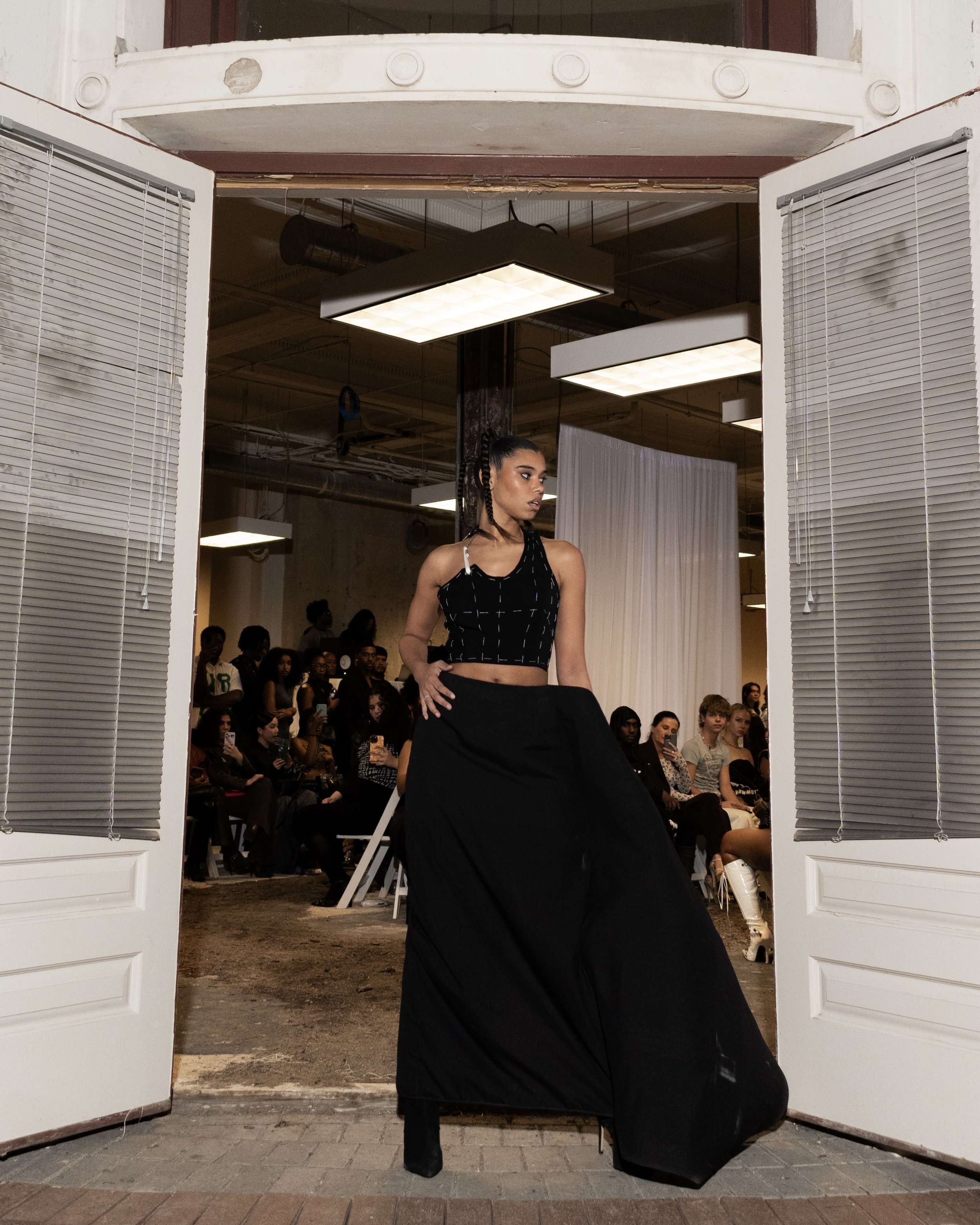
Look 20
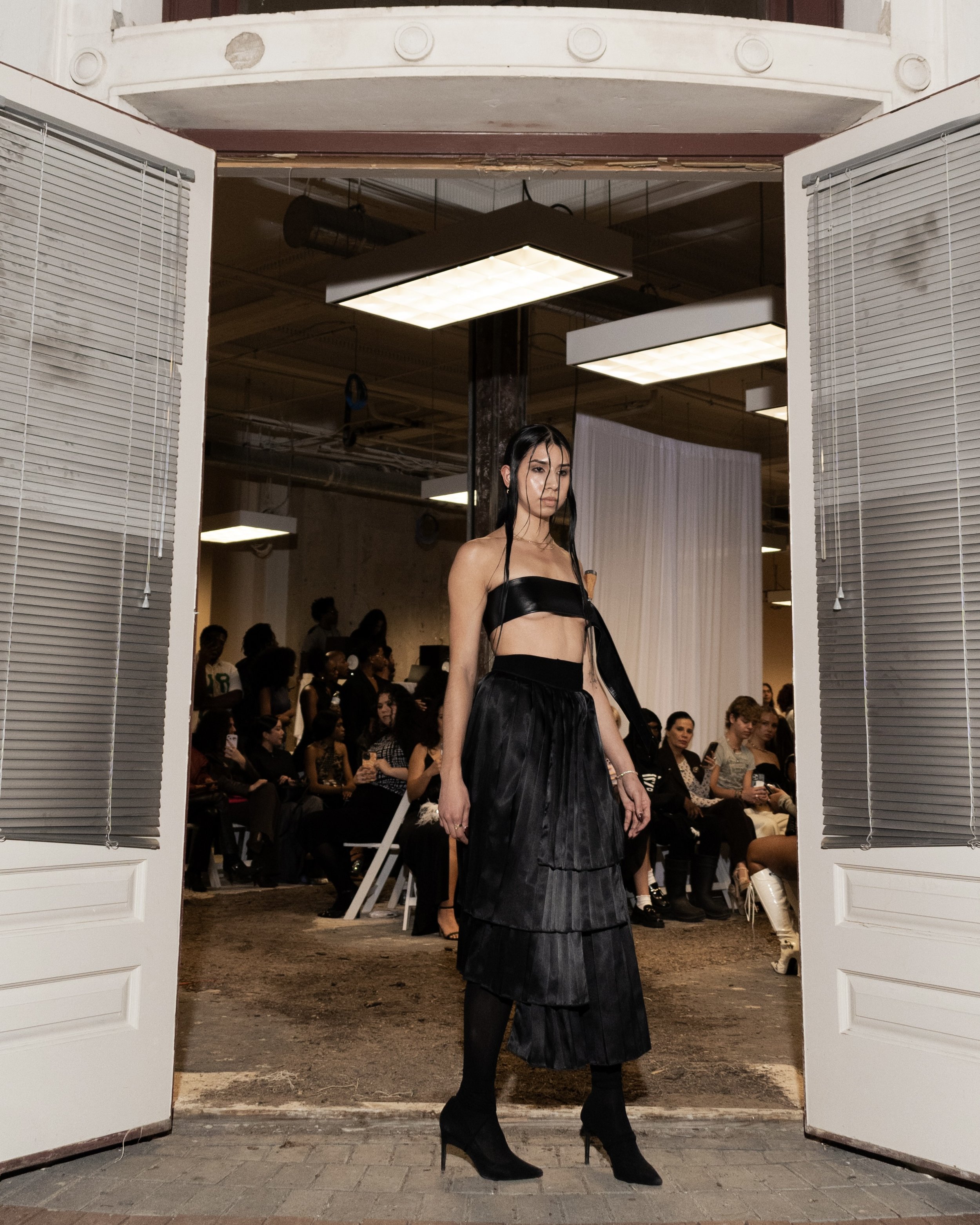
Look 21

Look 22

Look 23
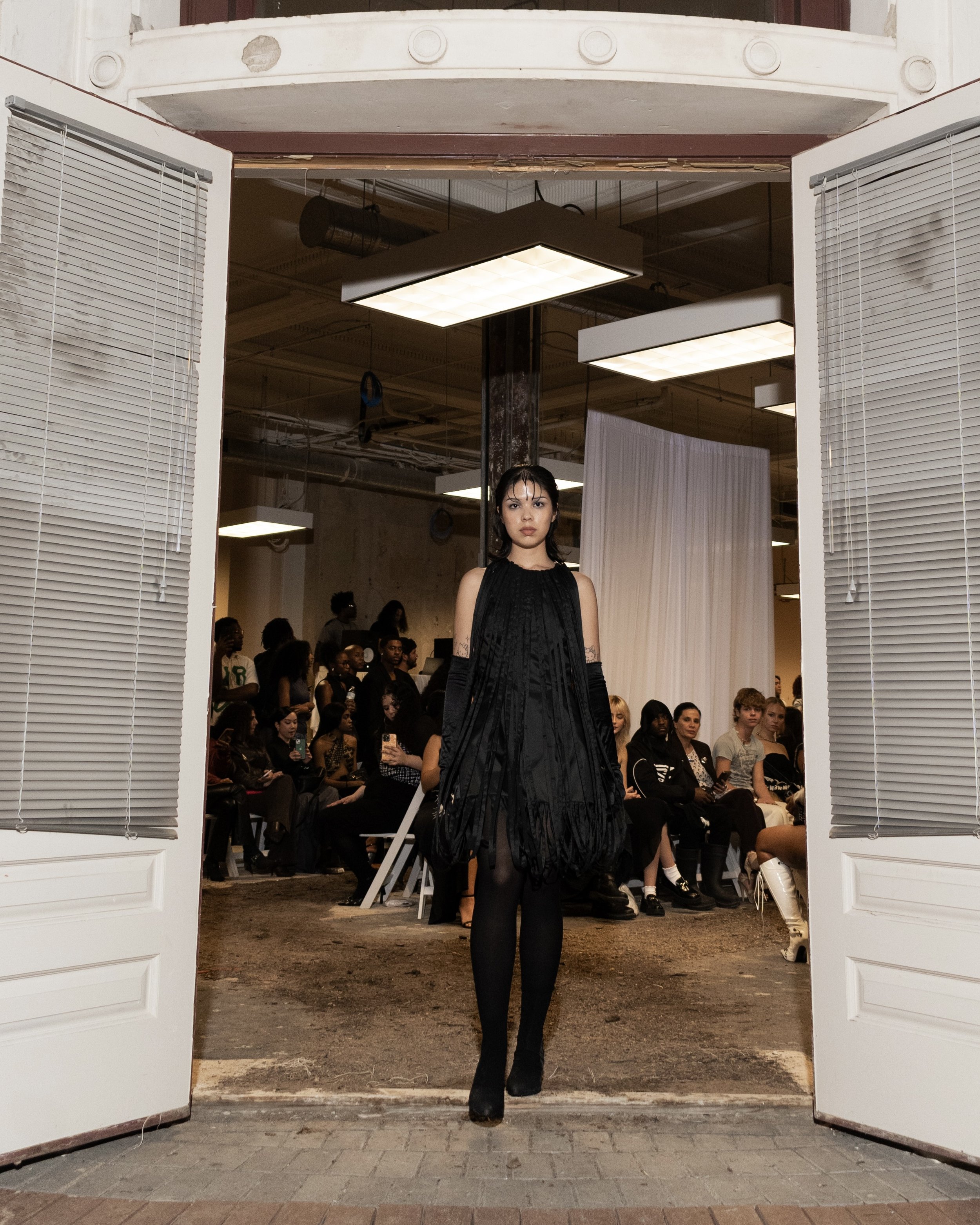
Look 24
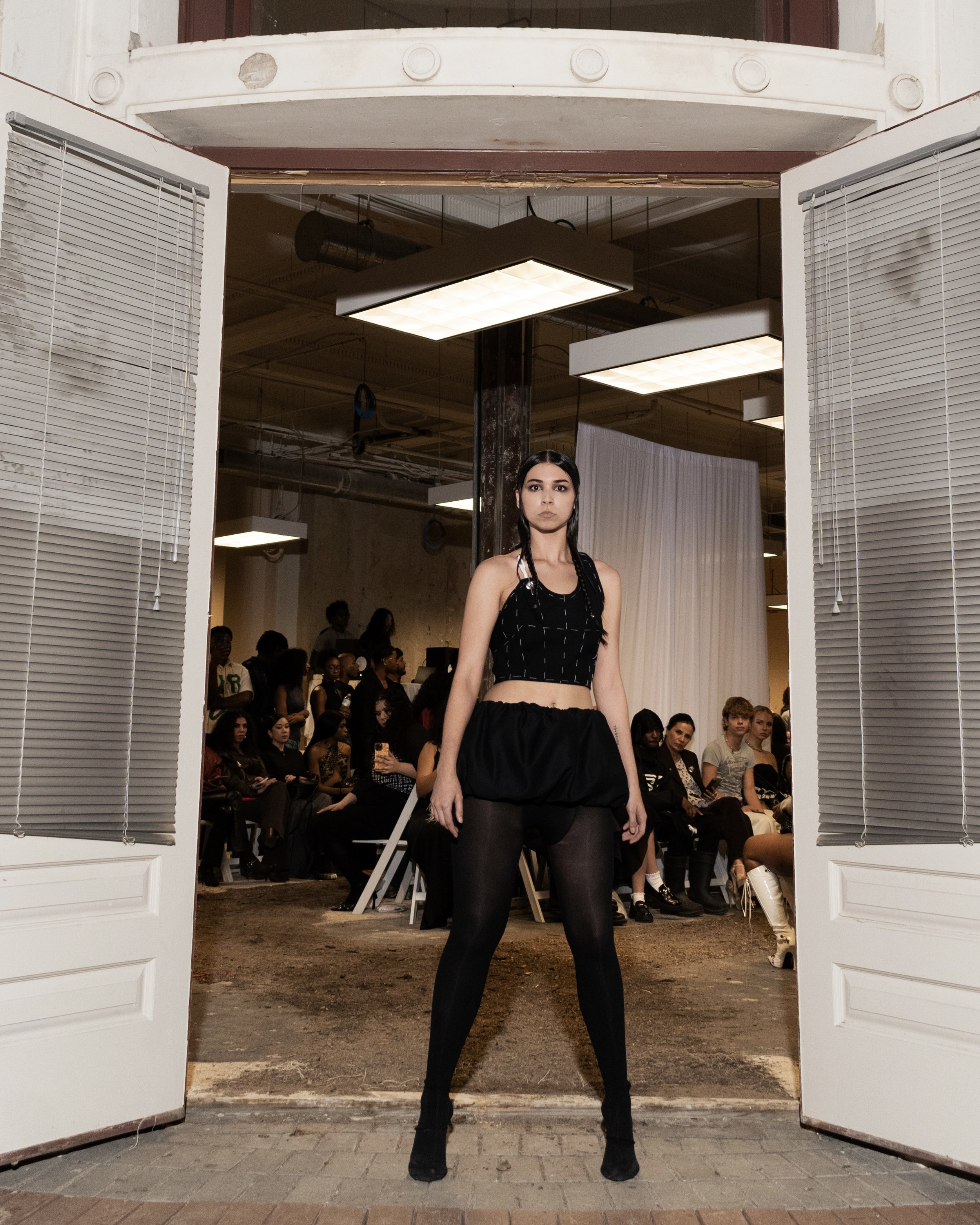
Look 25
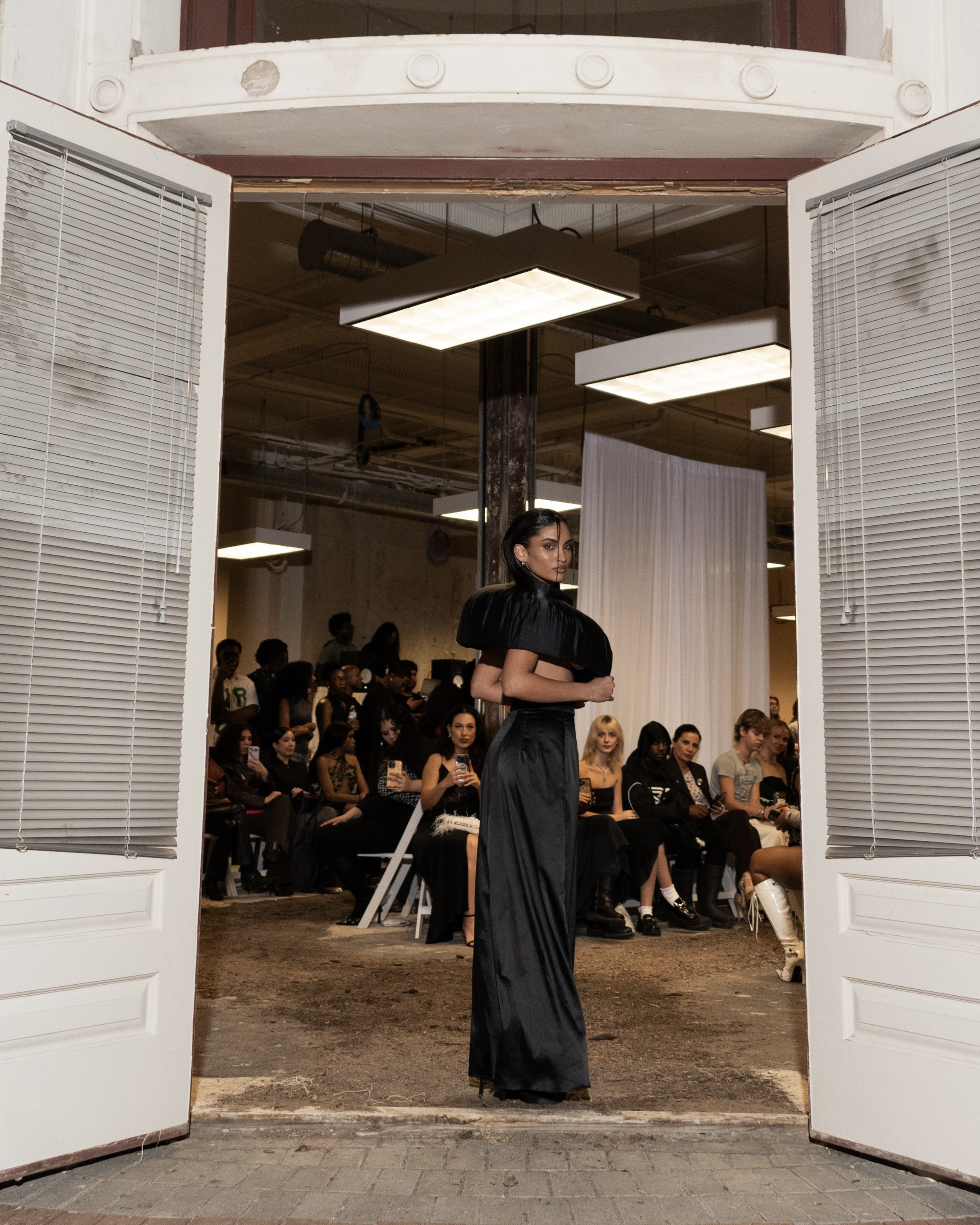
Look 26
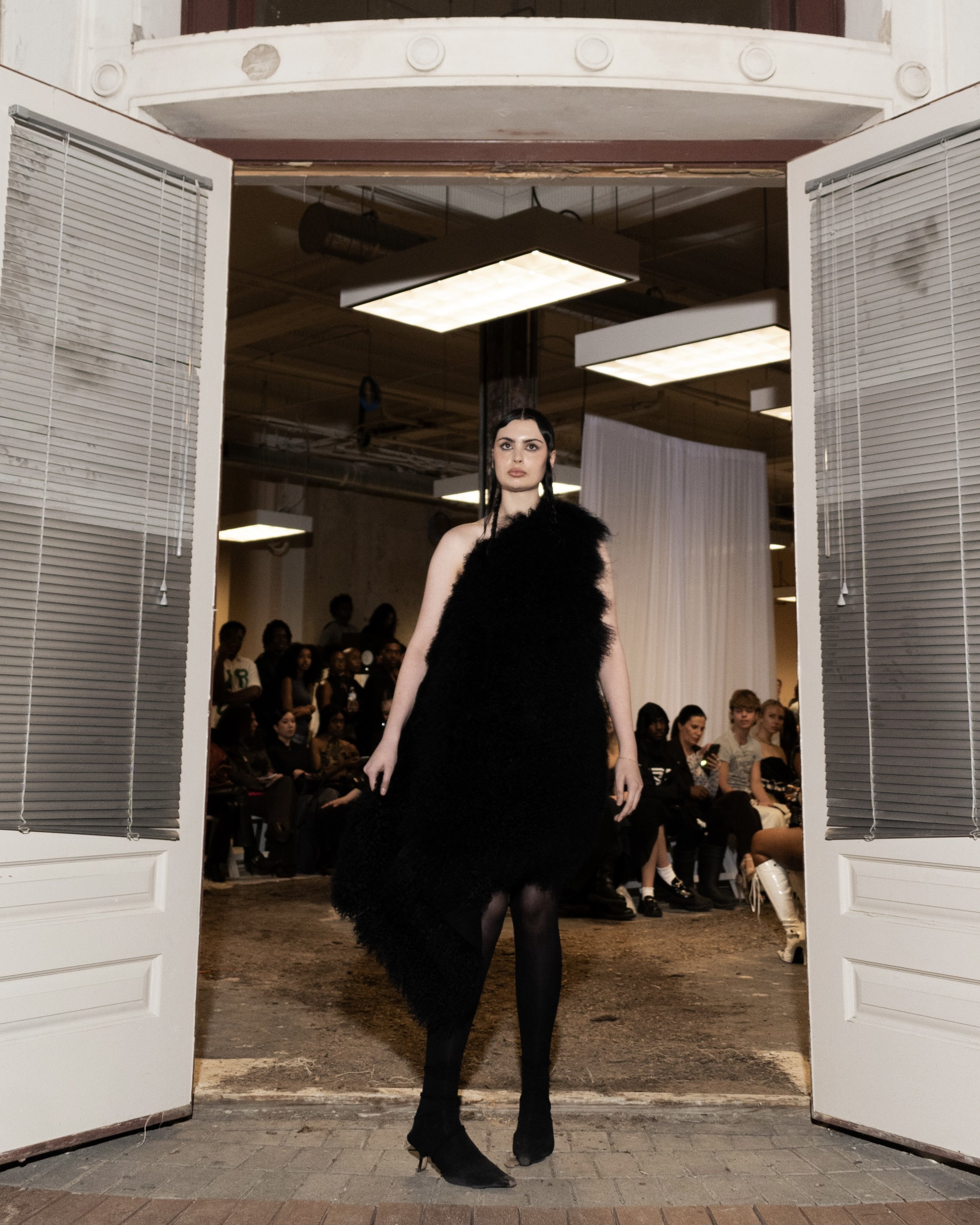
Look 27

Look 28
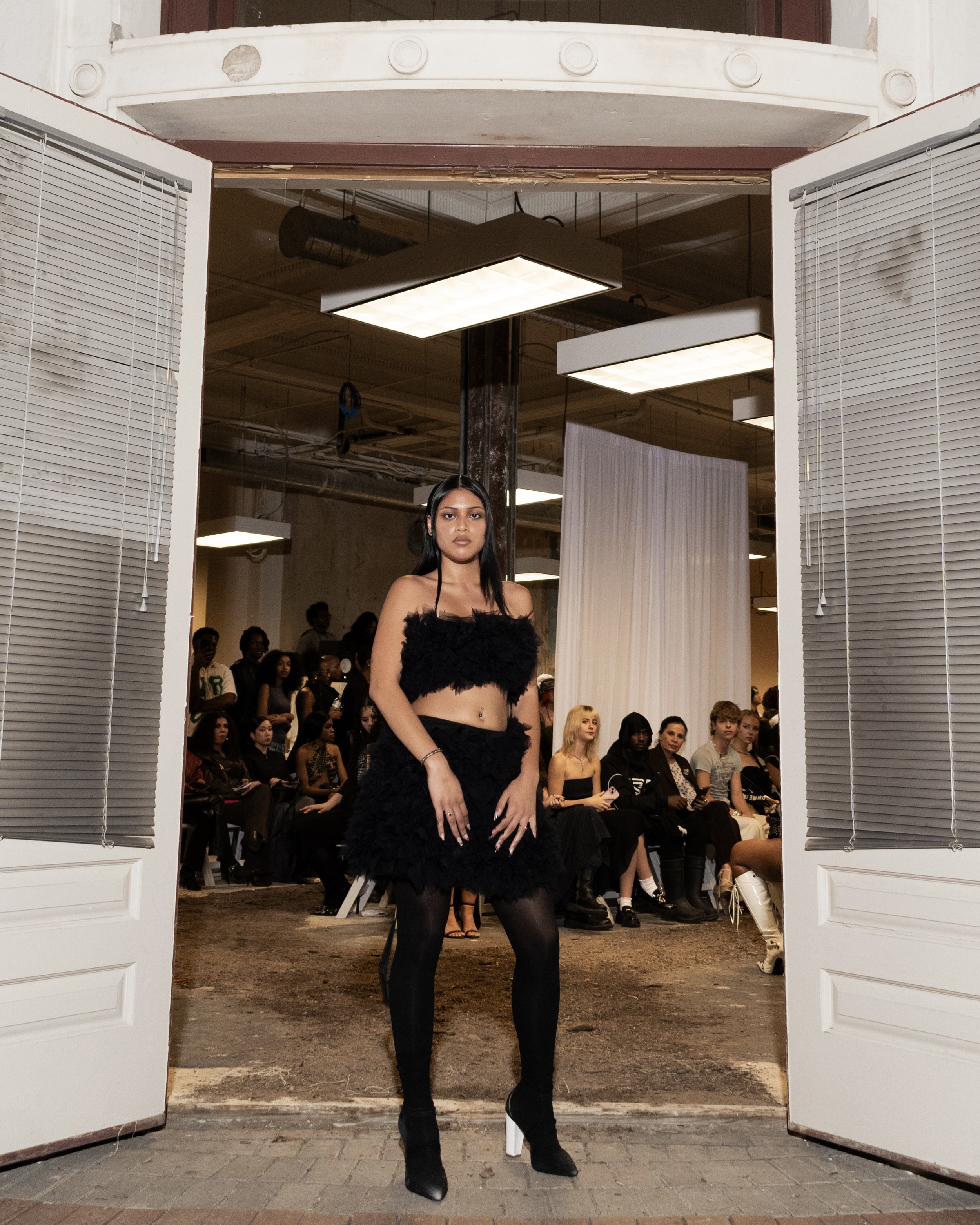
Look 29
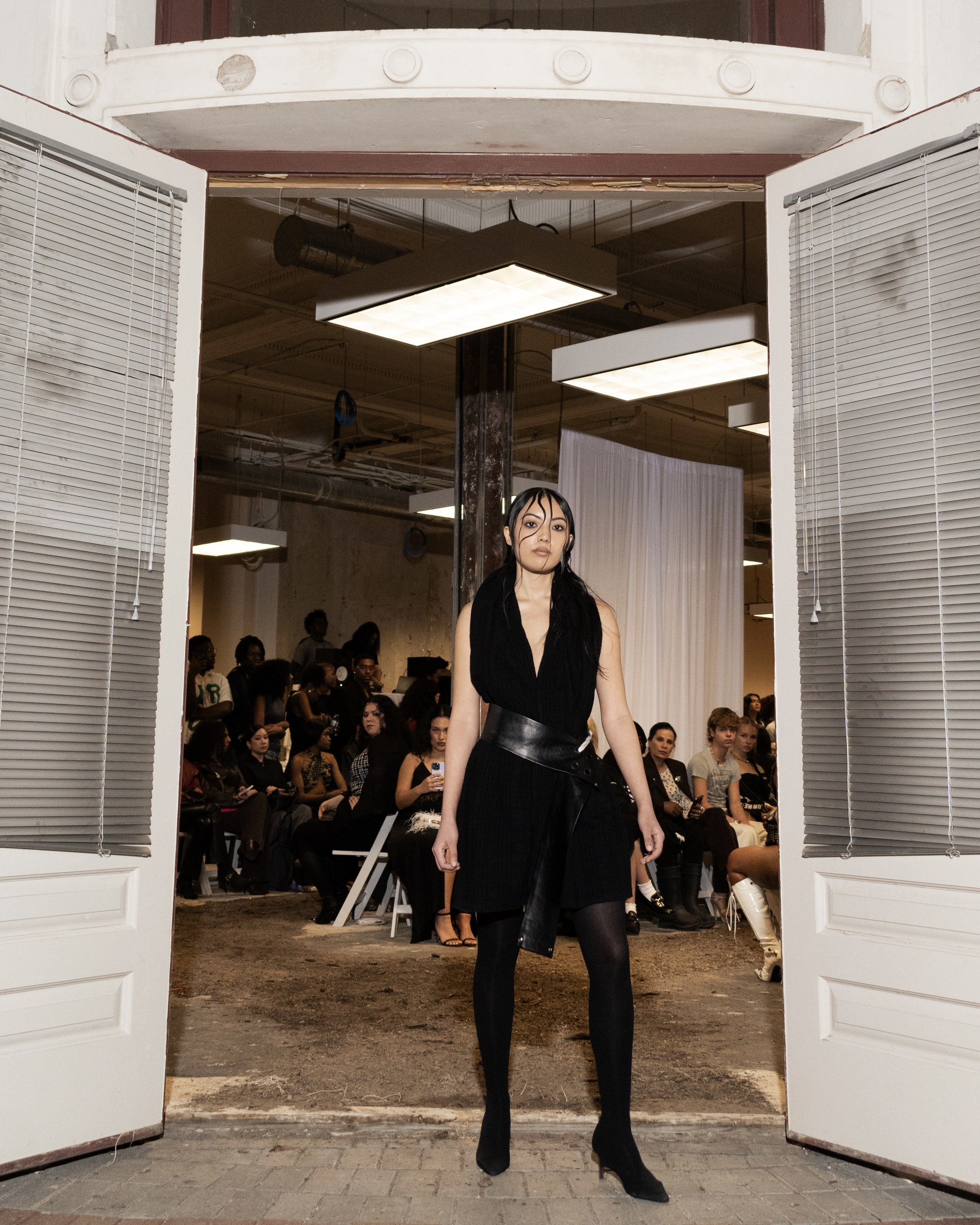
Look 30
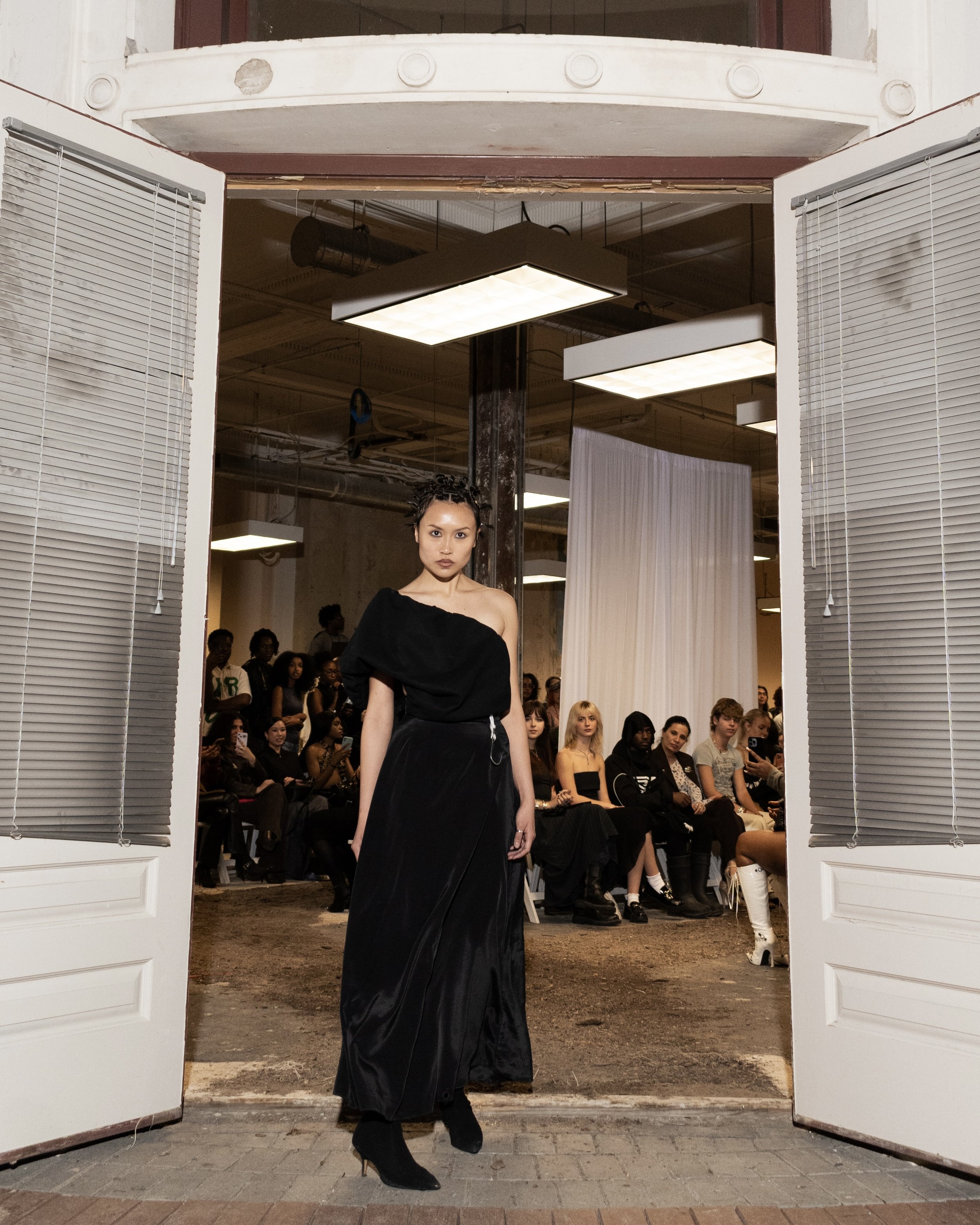
Look 31
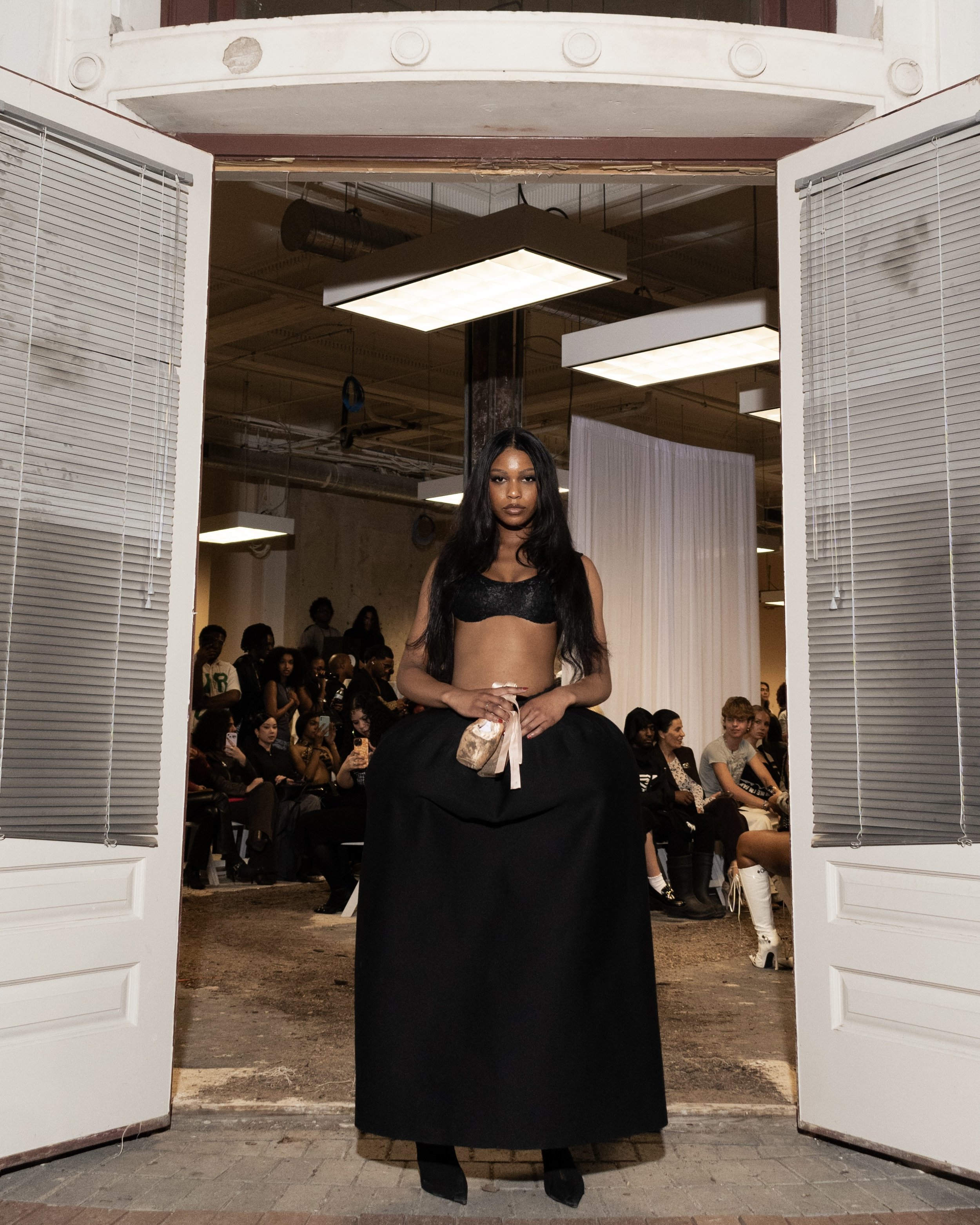
Look 32

Look 33
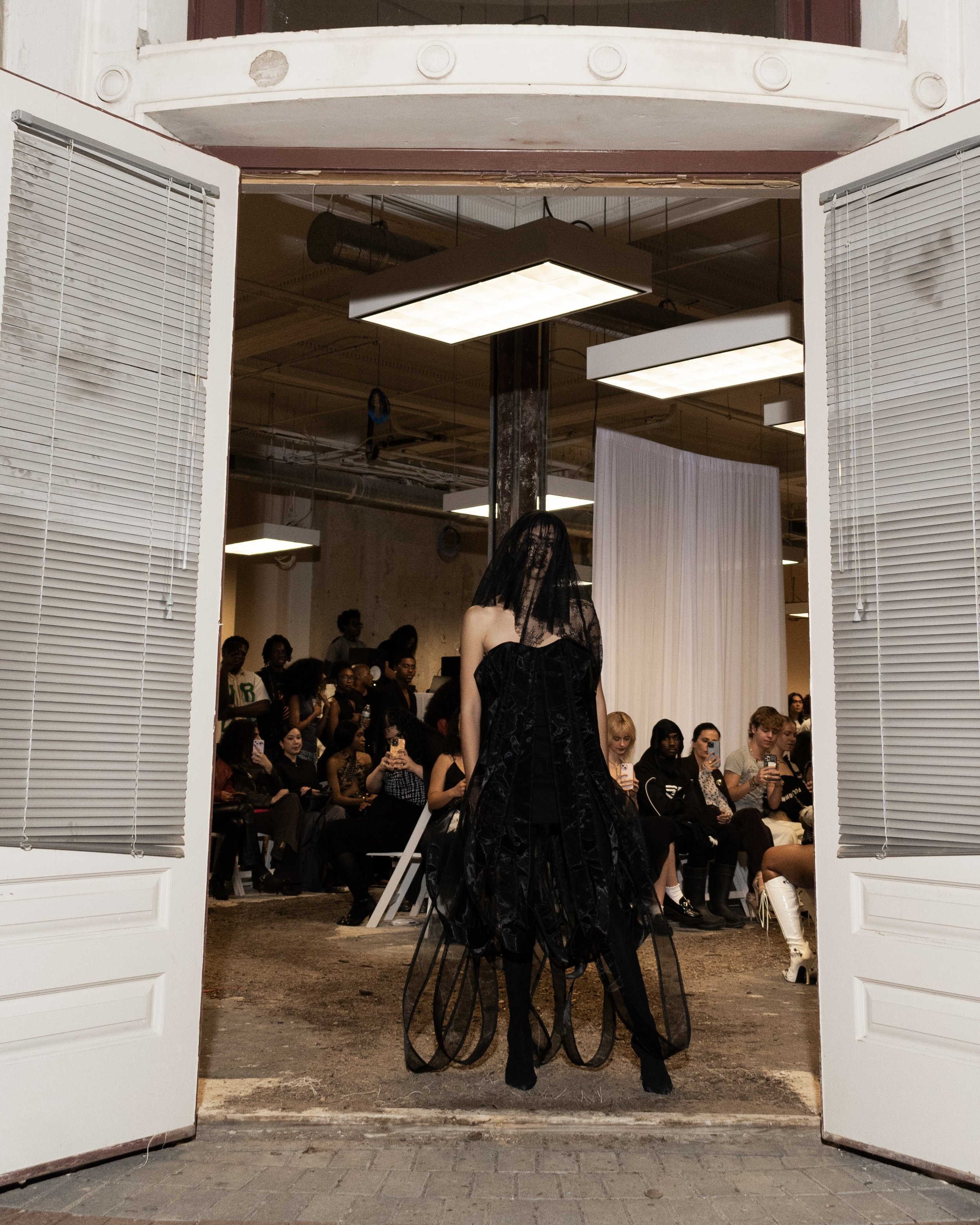
Look 34

Finale
